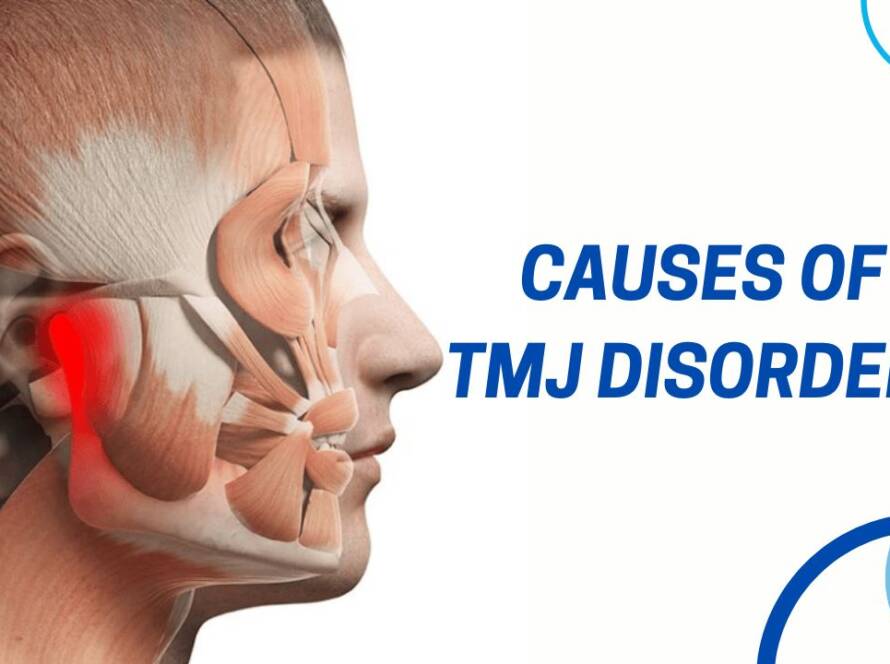1. Persistent Jaw Pain or Tenderness
One of the most common symptoms of TMJ/TMD is persistent pain or tenderness in the jaw, particularly when chewing, speaking, or yawning. This pain can range from
mild discomfort to severe pain that radiates to the ears, neck, or shoulders. The pain may be experienced in the jaw muscles, joints, teeth or can be nonspecific.
2. Clicking or Popping Sounds in the Jaw
If you hear clicking, popping, or grating sounds when you move your jaw, it could be (mostly it is not) a sign of TMJ/TMD. These sounds occur when the disc in the joint shifts or when the
cartilage is worn out, leading to bone-on-bone contact. About 30-40% of adults have clicking sounds in the jaw joint and without associated jaw pain or trouble moving the mouth, it may be a normal (possibly an annoyance) sign. Studies have found that clicking usually does not lead to problems (pain, trouble functioning) in the majority of people. At times, the joint cartilage can get stuck resulting in temporary limitation in jaw movement; majority of these patients also improve with minimal treatments.
REFERENCES:
https://www.sciencedirect.com/science/article/abs/pii/S0140673696902809
https://www.sciencedirect.com/science/article/abs/pii/S0278239197905310
3. Difficulty in Chewing or Speaking
TMJ/TMD can make it difficult to perform basic functions like chewing and speaking. You may feel like your jaw is out of alignment or that it doesn’t move as smoothly as
it should, leading to discomfort and frustration. Commonly, difficulty in chewing is due to muscle disorder but uncommonly it could indicate inflammation in the jaw joint or another joint disorder. Difficulty in speaking may indicate a neurological issue at times; consult an orofacial pain specialist or a neurologist asap if speech is impaired.
4. Jaw Locking or Limited Movement
Jaw locking occurs when the jaw becomes stuck in an open or closed position, making it difficult or impossible to move. This can be a frightening experience and is
a clear sign that you should seek professional help.
5. Ear Pain or Tinnitus
The TMJ is located close to the ear canal, so TMJ/TMD can cause ear-related symptoms such as ear pain, tinnitus (ringing in the ears), or a feeling of fullness in
the ears. These symptoms can often be mistaken for an ear infection. If you are suffering from only ear pain or ringing, the first consultation must be with an otolaryngologist to rule out pathology in the ear, nose or throat area.
6. Frequent Headaches or Migraines
Frequent headaches, particularly in the temples, can be linked to TMJ/TMD. The constant tension in the jaw muscles can trigger headaches or even migraines,
making daily activities challenging. Pain from TMJ disorders can mimic a migraine or can trigger more migraines.
7. Facial Pain or Swelling
Facial pain or swelling, especially on one side of the face, can indicate TMJ/TMD. This may be due to inflammation in the joint or surrounding muscles. Facial pain can be from the muscles or jaw or the nerves. Swelling is uncommon in pain disorders; some instances when there is swelling it could indicate a neurological or immune disorder.
8. Toothaches or Changes in Bite
TMJ/TMD can cause changes in the way your upper and lower teeth fit together, leading to toothaches or noticeable wear on the teeth. Muscles of the jaw and head can refer to pain in the teeth and sometimes, it can be mistaken to be a dental pathology. Pain from the muscles can be felt in tongue, palate or individual teeth.
REFERENCE:
https://www.sciencedirect.com/science/article/abs/pii/S009923992100755X
9. Neck and Shoulder Pain
The muscles of the jaw, neck, and shoulders are interconnected, so TMJ/TMD can lead to referred pain in these areas. This pain may be constant or may come and go
with jaw movement.
10. Pain after Dental Treatment
About 10% of patients who undergo root canals experience pain for 6 months (or more) despite the root canal being done well. We suspect, patients who undergo other dental treatment (orthodontic treatment, crowns, gum surgery) may have similar experiences.


